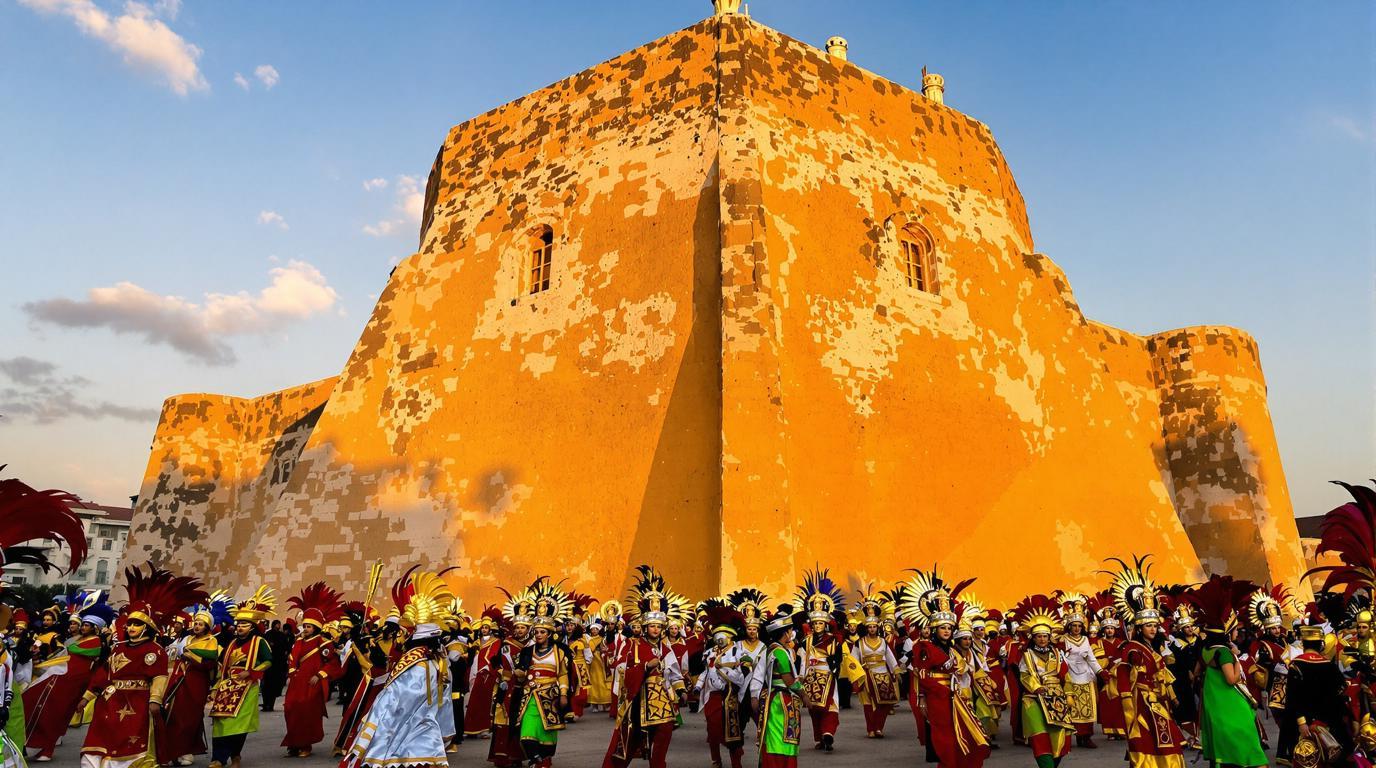Cebu City: Where Ancient Crosses Meet Vibrant Street Festivals
A living museum of Philippine history
Standing before Magellan’s Cross, I’m transported back to 1521 when Ferdinand Magellan planted this Christian symbol on Philippine soil for the first time. This isn’t just any historical marker—it’s the birthplace of Christianity in the Philippines, housed in an octagonal pavilion with stunning ceiling frescoes depicting that momentous event.
Cebu City, the beating heart of Central Visayas, offers a fascinating blend of colonial heritage and Filipino vibrancy that few other destinations can match. Unlike Manila’s overwhelming sprawl, Cebu preserves its history while embracing modernity in a way that feels authentically Filipino.
Stone sentinels: Fort San Pedro’s enduring legacy
Just a short walk from Magellan’s Cross stands Fort San Pedro, the oldest and smallest Spanish bastion in the Philippines. Built in 1565, its triangular shape has weathered typhoons, wars, and centuries of history.
Walking along its weathered stone walls, my fingers trace the rough textures of coral blocks that have stood guard over Cebu for more than 450 years. The fort has served as a revolutionary stronghold, an American barracks, a Japanese prison camp, and now, a peaceful historical park.
“Our fort tells many stories,” explains Maria, a local guide. “These walls have seen Cebu transform from a Spanish outpost to the thriving city you see today.”
Sinulog: When streets become rivers of color
Time your visit for January, and you’ll witness the spectacle that is Sinulog Festival. This nine-day celebration culminates on the third Sunday of January with an explosion of color, music, and dance that transforms Cebu City’s streets into rivers of movement.
The heart of Sinulog is the traditional dance that mimics the gentle current of Cebu’s rivers—”sinug” in Cebuano. Dancers move two steps forward and one step back, creating a hypnotic rhythm while carrying images of the Santo Niño (Holy Child).
If you’re seeking a similarly vibrant cultural experience elsewhere, Gorée Island near Dakar offers powerful heritage celebrations that honor very different historical moments.
Beyond the cross: Hidden treasures of old Cebu
Parian district, once home to wealthy Chinese merchants, harbors the Yap-Sandiego Ancestral House—one of the oldest Chinese houses outside China. Built in the late 17th century, this coral stone and molave wood structure offers a glimpse into colonial-era living.
The nearby Casa Gorordo Museum showcases how Cebu’s elite lived during the Spanish and American colonial periods. Its antique furniture, religious artifacts, and period clothing tell stories of a bygone era.
History buffs will also appreciate this medieval French village with its 12th-century château that now serves as an art gallery.
Street food paradise: Flavors of the Queen City
Cebu’s culinary scene is legendary. The city’s signature dish, lechon (roast pig), has been called the best pig ever by Anthony Bourdain himself. Head to Larsian BBQ for authentic street food where smoke billows from grills laden with pork, chicken, and seafood.
“Our lechon is special because we stuff it with lemongrass, leeks, garlic, and other secret ingredients,” shares Roberto, a third-generation lechon master. “The skin must be perfectly crispy while the meat stays juicy.”
For dessert, try budbud kabog (millet rice cake) paired with hot chocolate—a combination that rivals the wine pairings you’d find in California’s family-owned wineries.
Island escapes just minutes away
When city exploration tires you, Mactan Island awaits just across the bridge. Its white-sand beaches and crystal-clear waters offer perfect tropical relaxation, much like Thailand’s hidden island paradises.
For nature lovers, rare palm forests like those in Seychelles have their Philippine counterpart in Cebu’s southern mountains, where ancient trees cling to limestone cliffs above turquoise waters.
Cebu City perfectly balances its historical significance with natural wonders, creating a destination that speaks to both mind and soul. As I watch the sunset paint Fort San Pedro’s walls golden, I understand why locals call this the Queen City of the South—it rules with both strength and beauty.
